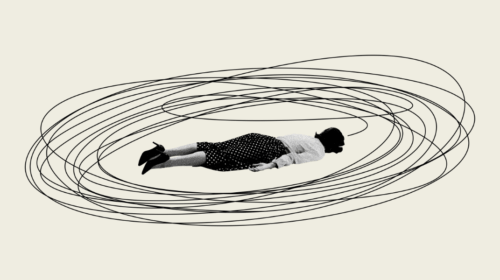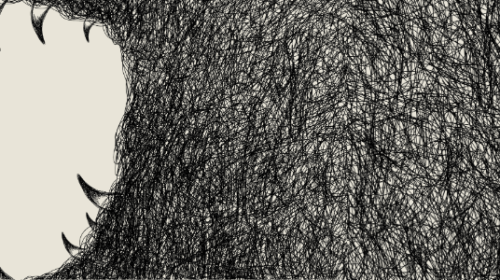The word “ritual” is often synonymous with the occult, conjuring images of women dancing wildly around a bonfire. Or women chanting in a circle. Or women sacrificing a goat (God forbid a woman do anything, right?) But in truth, the idea of ritual is much simpler and often so mundane that we hardly notice it even occurring.
The Christian ritual of Baptism, for example, symbolizes rebirth through water, while marriage ceremonies provide a diverse set of standard rituals from around the globe commemorating the joining of families. Even making a cup of coffee every morning can help you transition your mind from sleepiness to wakefulness. Imagine you’re an athlete, and you’ve just won a game. The crowd is going wild, your teammates surround you, and someone hands you a trophy. What’s the first thing you do? If your answer is to hoist it high above your head so that everyone can see it, guess what? You’ve just partaken in a ritual.
And objectively, it’s all pretty silly, right? Someone who’s never seen a baptism would probably cock an eyebrow at it, wondering why a preacher is drowning their congregation in a large body of water with dozens of onlookers about. Comedian Simon Amstell opined at the point of marriage during one of his recent sets, saying, “I think partly I just can’t believe people are getting married… they’ve already lived together for 10 years, now they have to announce they’re going to carry on as they are. Why do I have to go to Dorset for that?” So, what keeps Baptism holy? What keeps marriage sacred? What keeps Friday night football games central to people’s lives?
Community
Rituals have remained an integral part of human society for thousands of years and have a place in helping individuals and communities mark significant transitions, process emotions, and reconnect with their shared values. Take the ancient Roman celebration of Saturnalia to honor the god Saturn. For 7 days in mid-December, Romans would feast, exchange gifts, and eschew typical social norms to create a carnival-like atmosphere. During this time, enslaved people and their masters would become equals, sharing a table, food, drinks, and the general atmosphere of merriment. Saturnalia teaches us that rituals can serve as a social release valve, providing a structured space for relaxation, chaos, and joy. The upending of social hierarchies offered a collective opportunity to escape daily routines and roles and strengthened the community by allowing people from different classes to interact in novel ways, promoting understanding and solidarity. Rituals can act as a necessary break from societal pressures and provide space for reflection or renewal. In fact, the theme of merriment, feasting, and gift-giving was so popular that its influence on Christmas celebrations can still be felt today.
Spirituality
Rituals can also serve as personal anchors to one’s spirit. Ramadan, which takes place in the 9th month of the Islamic lunar calendar, is considered the holiest month for Muslims worldwide. During this month, observers fast from dawn until sunset as a means of spiritual purification, self-discipline, and devotion to God. Ramadan provides Muslims with a set time for spiritual renewal where they can practice self-discipline, compassion, patience, and humility alongside a fortifying community with a unified purpose.

Joy
Perhaps most interesting is how rituals develop and evolve to meet man’s needs. Through various centuries and cultures, we can assume many rituals rose and fell according to their usefulness. Using henna, for example, was at one time as common in some Christian communities as in South Asian and Jewish communities. Henna was originally used as a remedy for hot climates due to its naturally cooling properties and was later adopted as a form of body art known as mehndi to celebrate significant life events, but evidence of use far beyond desert civilizations see henna being used by European Christians in celebratory rituals up until the 15th century when the Catholic Church prohibited it under the misguided impression that it was heretical. This prohibition and the milder climates of the European continent meant henna had lost its utility and cultural favor throughout Southern Europe. Today, henna is still common in Eastern Orthodox and Coptic Christian communities, likely due to the regional placement of adherents and the lack of influence from the Catholic Church. Henna art provides a visual indicator that the rites of birth, marriage, and death are being observed and celebrated, and the tradition of mehndi gatherings gives humans yet another opportunity to build community and honor a multimillennial-old tradition of joy.
Grief
An example of how rituals give space for expressions of grief can be found in the Baining tribe of Papua New Guinea, who developed a ritual they call “Awumbuk” to cope with the feelings of emptiness often felt after a visitor leaves.
Without context, this is another ritual that sounds a little silly. After all, I can’t remember a happier time than seeing guests leave my space. But imagine you’re a first-time parent living far from your mother. When you give birth, she comes to stay with you to help you manage for a few weeks. Eventually, the time comes to say goodbye, and there’s a general feeling of sadness between the two of you. After all, your mom is about to walk through the jungle, and you’re unsure when or if you’ll ever see her again. The anxiety this would produce in a person could be debilitating, and in a 16th-century jungle tribe, there is just no time for a mental breakdown. There are babies to feed and gardens to till, and you have to keep your emotions from ruling you, or you might not make it.
During Awumbuk, the people who have been left are granted three days of rest from any gardening or hunting. Everyone behaves gently towards them as they sort through emotions that bring tears, fatigue, and a loss of self (depression, anyone?) On the third day, the sufferers leave a coconut shell of water outside their house, which is believed to soak up sadness, and with a few ritual words, they throw the water out into the garden, thereby purging their emotions and signaling a return to active life. The ritual of Awunbuk is similar to mourning rituals all over the world and legitimates what might otherwise be a guilty or confused melancholy. It gives sadness a shape and a direction, demarcating a time for it and then gently creating a moment when we’re meant to overcome it and rejoin the group.
Bowling Alone
With the relatively recent explosion of industrialization, science, and technology, humans have gradually moved away from communal rituals as they were. Despite cars, trains, planes, and the internet making us more connected than at any other point in history, mankind is currently undergoing a global epidemic of loneliness and isolation.

American author Robert D. Putnam’s 1995 essay “Bowling Alone: America’s Declining Social Capital” outlines the deterioration of social interaction starting in 1950. Putnam argues that decreased involvement in communal activities such as church, voting, serving on committees, and even joining local sports teams lead to a decay in social functioning that strong democracies require from their citizens. Putnam also points out that while the number of bowlers increased between 1975 and 1995, the number of people who bowled in leagues had actually declined. Understanding the sociopolitical climates that induce self-isolation from traditionally communal activities is a topic for another day. Still, the rise of information access did not help matters nearly as much as one might imagine.
Attitudes shaped by individualism have increased over the past few decades, with people focusing more on their personal fulfillment, careers, and family lives than on broader community involvement. Gen Z is the latest in a long line of young people blamed for the erosion of social ties, with critics pointing to their emphasis on personal boundaries and rejection of the idea of “owing” others as evidence of selfishness—but the fault rests with us all.
The rise of technology and media has shifted social behavior toward more solitary, passive activities rather than group or community-based participation. These changes have limited opportunities for people to form local social networks. Following a global pandemic that only exacerbated already fraught communal ties, the consequences of a nebulous existence have only become more apparent. The “Bowling Alone Theory” underscores the critical role social networks play in maintaining the health and wellbeing of a community and each individual in the community. Without this network, societal fragmentation contributes to collective decline.
A Resurgence on the Horizon
Though we may not hold the same space for rituals as we once did (it’s been an age since I danced naked under the moonlight and turned into a toad), it doesn’t mean we’ve lost the plot entirely. An excellent example of prevailing rituals can be found in Native American herb-burning ceremonies and the Kakiniit tattoos of Inuit women, both of which have seen a resurgence in observation in recent decades. As young people begin to feel a growing sense of disconnection, many are inspired to explore their roots and reconnect with the cultural heritage of the communities they came from. This is yet another example of the indispensable need for ritual: Its ability to give humans a sense of belonging.
Though more difficult to see due to its ubiquitousness, Western culture has its own rituals that are still widely practiced. The American tradition of Thanksgiving celebrates gratitude and togetherness (the fact that it directly precedes the biggest shopping day of the year is its own ironic brand of American humor). Likewise, high school football games are a staple of American culture that equally confounds and inspires foreign onlookers. In Texas, students wear chrysanthemums (shortened simply to “mums”) for homecoming celebrations, with the decorative flowers being adorned to the point of capacious absurdity. What do these modern rituals have in common with ancient ones? They’re rooted in a sense of community. We come together for a shared meal, sporting events, and the ceremonial be-mumming of our youth.
The psychological benefits of ritual can’t be overstated. By providing a sense of control, promoting emotional release, and fostering connection, rituals remain just as relevant today and, perhaps, are more relevant than ever as we navigate the changing terrain of social and personal wellness.
Rituals in Recovery
Echoes of ancient rituals can still be seen today, reminding us that structured, communal activities can promote healing and growth. Celebrations like New Year’s Eve and Mardi Gras can offer a cathartic release to pent-up emotions. Like Saturnalia, these holidays provide a set time where social upheaval is accepted and even expected as celebrators embrace joy, indulgence, and community. And while we can’t expect every day to be Mardi Gras, controlled moments of release—whether through celebration or symbolism—can provide a much-needed break from the rigid discipline required to maintain your mental wellbeing and sobriety.
Indeed, the mere existence of sober birthdays and sobriety chips proves that our need for belonging remains unchanged and that rituals still hold an essential place in our society. These moments allow individuals to reflect on their journey and celebrate their progress without losing sight of their larger goals. The structure these milestones provide can help people in recovery feel a sense of accomplishment and resilience while also giving them a communal outlet for joy and reflection.
The Day of Atonement, or Yom Kippur, is one of the most important rituals in Jewish tradition. It is a time for deep reflection, where individuals are encouraged to think about those they have wronged and seek forgiveness. The ritual emphasizes collective responsibility and offers a framework for repairing relationships and moving forward with a clean slate. Modern recovery frameworks, particularly 12-step programs, place a similar importance on the concept of atonement as a regular part of the healing process. Step 9 of Alcoholics Anonymous encourages individuals to take responsibility for their past actions and make direct amends whenever possible. Though rooted in Christian philosophy, the 12 steps resonate strongly with the themes of Yom Kippur, where apology and forgiveness are essential to emotional and spiritual growth. Moreover, they allow individuals to release feelings of guilt or shame, which are often major barriers to mental health and recovery.
As with the discipline and mindful abstinence of Ramadan, recovery programs often emphasize the importance of community support in maintaining self-control. Group therapy sessions, sober living environments, and communal rituals—such as music circles or shared meals—can create a supportive environment that fosters both individual accountability and collective empathy. These modern adaptations of ancient rituals remind us that recovery and personal growth are often best achieved in the context of a caring community.
Modern therapy practices often incorporate symbolic rituals to help individuals process grief and let go of painful emotions. Whether through journaling, meditation, or creative expression, many people find that engaging in symbolic acts—such as lighting a candle or writing down their feelings—can help them release emotional burdens. Much like the Baining ritual, these modern practices provide structure to the grieving process, offering a clear beginning and end to emotional turmoil.
For those struggling with mental health challenges, creating personal rituals for emotional release can be incredibly healing. These rituals can involve physical acts, like burning a letter of apology or releasing a balloon with written worries attached. By giving sadness or anxiety a physical form, individuals can symbolically purge their emotions and signal their readiness to move forward.
And let’s not forget the rituals that remain personal to us. Going to the gym every day, scheduling a massage once a month, and walking your dog after work are common practices that help us achieve regular feelings of control, achievement, and reward. Rituals can also present themselves in repetition, like using prayer beads, reciting prayers, or repeating positive phrases to create a soothing mantra. Rituals also give us a space for a peaceful transition from one plane of consciousness to another, like putting your phone on focus mode during certain hours, saving work until after you’ve had coffee, and not going to bed until you’ve showered and brushed your teeth. Each of these activities, though personal and not particularly communal, signals the end of one task and the beginning of the next and is particularly helpful for people who struggle with ADHD and executive functioning skills.
The Future of Rituals
The rituals of the past were not merely ceremonial; they served real psychological and emotional purposes that remain relevant today. Modern society may have shed many of its collective rituals, but their need has not disappeared; instead, they have become quiescent or unfairly tainted by associations with less admirable sides of religion or politics. What we used to do as a community we now do alone. We indulge, get drunk, have affairs, say sorry, purge ourselves, and feel grateful for our existence, but we do so without guidance and lacking boundaries. Our attempts at betterment become colorless and half-hearted.
By reintroducing or adapting rituals into modern life, we create spaces where people feel supported in their efforts to grow. For those in recovery, rituals provide structure and offer moments of celebration, reflection, and accountability. Whether related to self-care, mindfulness, or emotional release, rituals can provide the stability and clarity needed to navigate the ever-evolving realities of life that we all must contend with.
A challenge for the future will be to create new rituals that are every bit as meaningful as the old ones, with the proper respect given to art, music, and design, to take some of the burdens off of us as individuals. By then, I hope we’ll have realized that being modern has not replaced our need for rituals.























